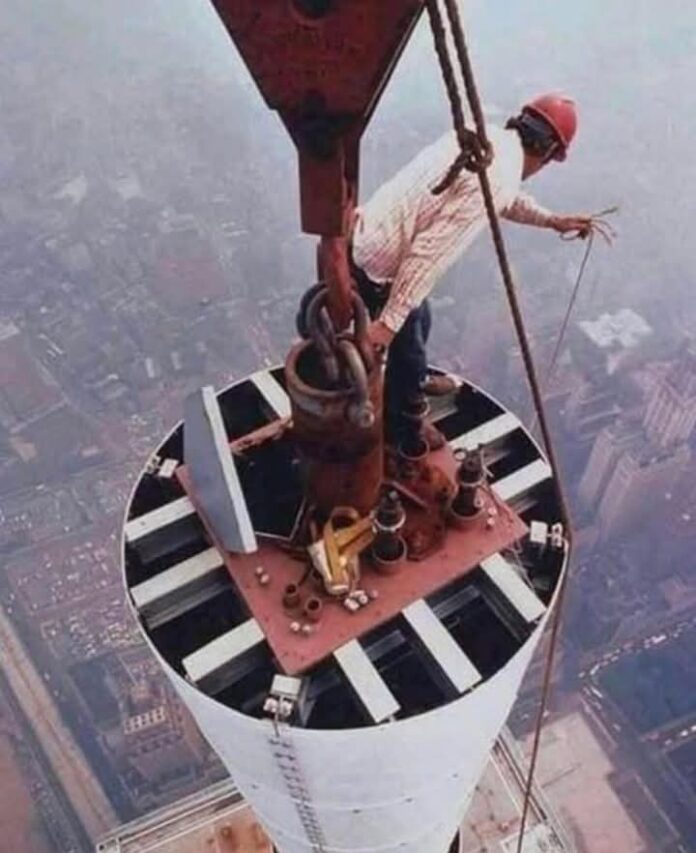In 1979, a worker was photographed repairing the antenna atop the World Trade Center in New York City, a striking image that highlights both the scale of the iconic twin towers and the risks associated with maintaining such a monumental structure.
The antenna, a crucial component for transmitting television and radio signals, was an integral part of the World Trade Center’s functionality, emphasizing the technological advancement of the time.
This photograph by Peter Kaplan captures not only the man’s work but also the sheer height and complexity of the task, as he carefully adjusts the antenna in an era before the use of modern safety equipment became widespread.
The image underscores the immense scale of the World Trade Center, which, when completed, was the tallest building in the world. The towers, which defined the Manhattan skyline, represented the bold aspirations of post-war America, particularly in terms of architecture, engineering, and economic power.
The worker’s task, though seemingly routine, speaks to the larger challenges of maintaining such a massive and high-profile building. It also serves as a reminder of the technical feats required to keep the world’s tallest buildings operational and relevant in the face of rapidly advancing technology.
Peter Kaplan’s photograph from 1979 also evokes a sense of awe and admiration for the workers who contributed to the care and upkeep of the World Trade Center. At a time when skyscrapers were becoming symbols of progress and modernity, the men and women who maintained them were largely unsung heroes, performing tasks high above the streets of New York City.
This image not only documents a moment in time but also reflects the dedication and perseverance of those who worked behind the scenes to ensure that these towering landmarks continued to serve their purpose in a rapidly evolving urban landscape.
Credit Goes To The Respective Owner



